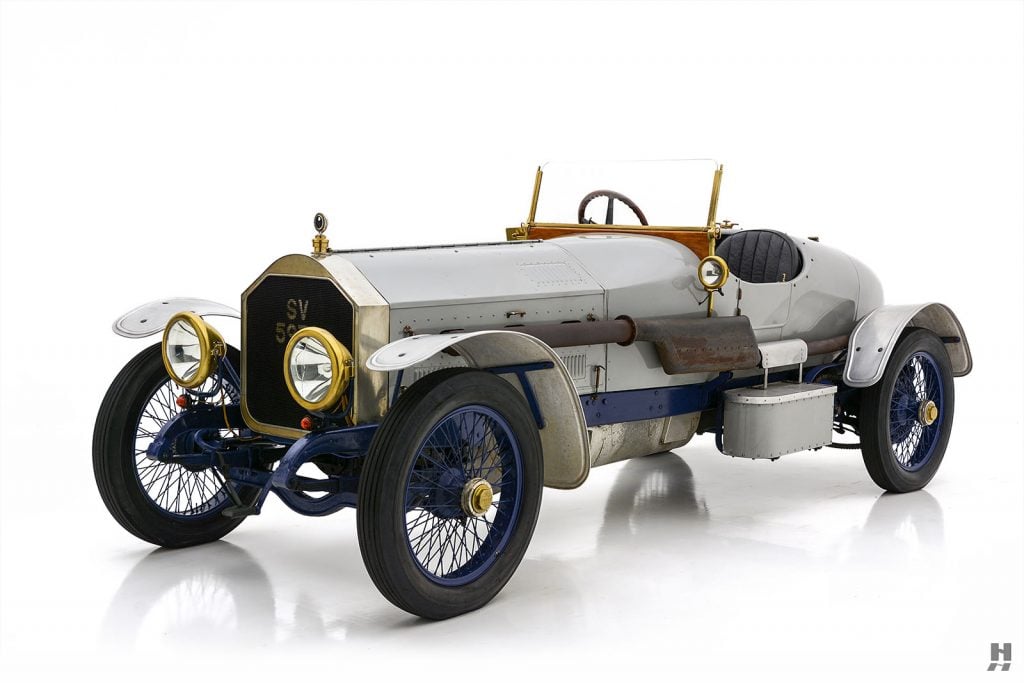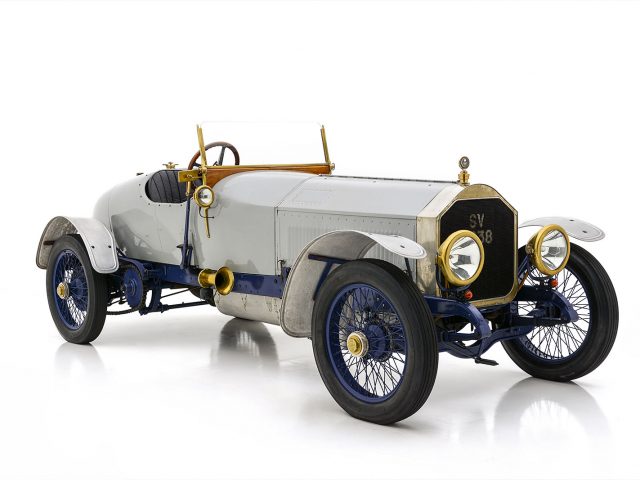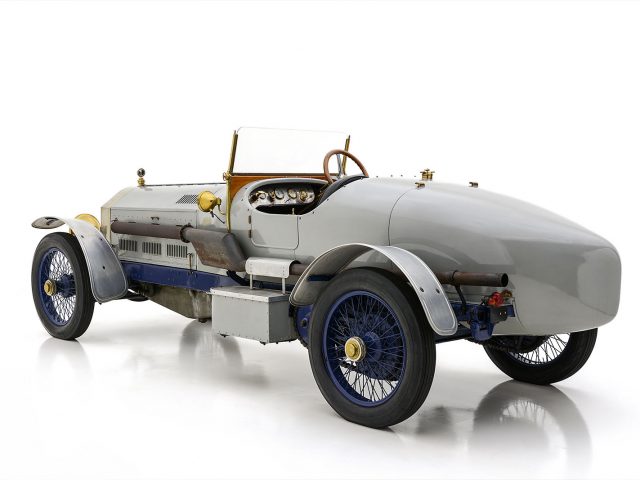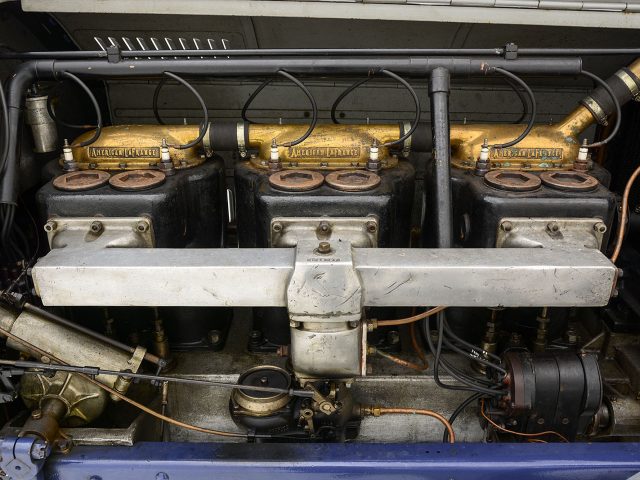American LaFrance is one of America’s oldest and most widely-known fire apparatus manufacturers. Founded in Elmira, New York as LaFrance Manufacturing Company by Thruxton Slocum LaFrance in 1873, the company initially built hand-powered equipment during the horse-drawn era. In 1903, they merged with American Fire Engine Company to become American LaFrance, and quickly adapted to the horseless carriage era. Initially offering steam-powered vehicles, their first petrol-powered engine arrived in 1907. American LaFrance rapidly rose to prominence thanks to their impeccable reputation for dependability and quality. Countless firefighters across the country relied on their faithful American LaFrance engines, earning the firm a loyal following and iconic status.
Early in their long and illustrious history, A.L.F. built a tiny number of civilian road cars, rumored to be engineered with the help of their neighbor, Simplex. Known as the “Chief’s Car,” they were powerful, luxurious, and expensive, yet more likely to be found in the carriage house of a wealthy businessman than in a firehouse. It isn’t known precisely how many were built, although it was clear that this was merely a side project for American La France, perhaps only to provide transport for high-ranking executives. Today, experts believe that just two original Chief’s Cars exist, yet, despite their relative obscurity, numerous enthusiasts found the inspiration to create unique personal interpretations of the theme, utilizing the mighty T-head engines and robust chassis of American LaFrance fire trucks. These creations are as varied as the people that built them. A.L.F. speedsters are popular among veteran car enthusiasts as they are enormously powerful, thrilling to drive, and each is an individual expression of the person that built it.
This 1916 American LaFrance Speedster is based on the popular Type 75 chassis. It is a superb example of the breed; powerful, thrilling, and wonderfully suited for road events. According to the history file, Mr. Cameron Millar discovered this Type 75 in Nyack, New York, around 1980. He purchased it from the then-owners and imported it to the UK. That same year, it traded hands, and the new owners began a comprehensive restoration and transformation into this marvelous speedster. The chassis was stripped down and a full twelve inches removed from the wheelbase, reportedly without welding. The restorers retained the robust original drivetrain, 3-speed manual gearbox, chain-driven rear axle, and brakes from the Type 75, adding appropriately beefy hubs from an 8-Litre Bentley. They also lowered the steering column and relocated the controls accordingly to achieve the desired rakish lines. With the chassis sorted, the owners entrusted Rolls-Royce specialist Graham Neale to create this superbly detailed and evocative boat-tail speedster coachwork.
In 1989, the completed A.L.F. Speedster was accepted for entry into the VSCC, and in 1996 it partook in the club’s long-running and famous Madresfield Driving Test event. Today, it presents with a fabulous patina that brilliantly suits its outsized character. The well-proportioned coachwork is finished in light gray with bare alloy wings, along with blue wheels and chassis providing a pleasing pop of color. The cosmetics are consistent, and with a period-appropriate quality to the finish that can be absolutely presentable as-is, or can brought up to the next level should the new owner so desire. The quality of the coachwork is first-rate, feeling very robust and a good match for the car’s astounding power. Details include brass Gray & Davis lamps, Motometer, and Brooklands-style exhaust silencer. A large lift-up tail section incorporates the boot, spare wheel, and room for plenty of tools and luggage for long-distance touring.
Once aboard, you find a generously sized two-passenger cockpit, trimmed in black leather and period-appropriate bare alloy. The leather is in good order, nicely matured from years of careful use. The instrument panel features a mix of brass-era gauges including a Jones speedometer, Smiths clock, as well as ancillary dials for amps, fuel pressure and oil pressure. Brass switchgear and controls maintain the authentic experience from behind the wheel.
Of course, the centerpiece of any American LaFrance rests under the bonnet. In this case, it is a colossal T-head inline-six of fourteen liters. Producing prodigious torque at low RPM, this LaFrance ‘six is built to handle the most extreme conditions. The presentation of the engine is consistent with the rest of the car’s patina, appearing to have been enjoyed yet maintained. The mighty engine features 12V electric starting discreetly hidden below the floor, and a cleverly integrated 12V alternator, belt-driven off the prop shaft. The original shaft-driven Westinghouse generator remains in place to maintain the authentic look and feel under the massive bonnet. Road tests have proven it to be delightful on the road, with seemingly endless reserves of torque and a glorious bellow emanating from the Brooklands exhaust. The sale includes an extensive history folder with copies of the V5C registration documents and reprinted factory parts and repair manuals.
Over the years, enthusiasts have created numerous interpretations of the American LaFrance Speedster, yet few are as well-constructed and detailed as this. This car also has the added benefit of the VSCC’s blessing and is therefore eligible for their numerous prestigious events. Powerful, imposing, and impressively crafted, this magnificent American LaFrance is certain to thrill its next keepers for years to come.
Offers welcome and trades considered
If you would like to own a classic American LaFrance firetruck, check out our consignment program or contact us today!
Sorry this car has been sold. Are you looking to buy or sell a car like this? Contact a representative
For immediate assistance please call us at +1-314-524-6000 or please fill out the following form and a member of our team will contact you.





































